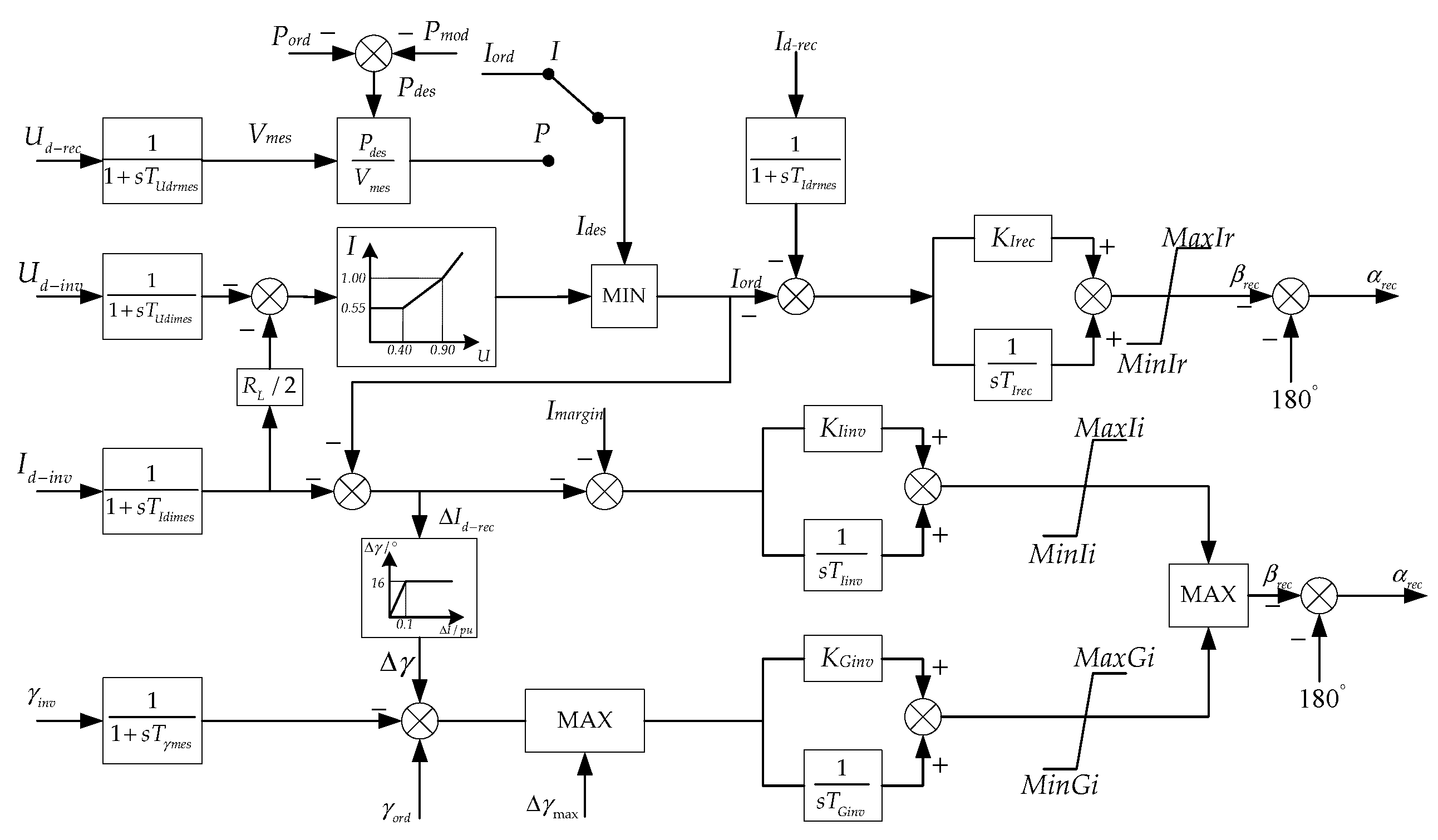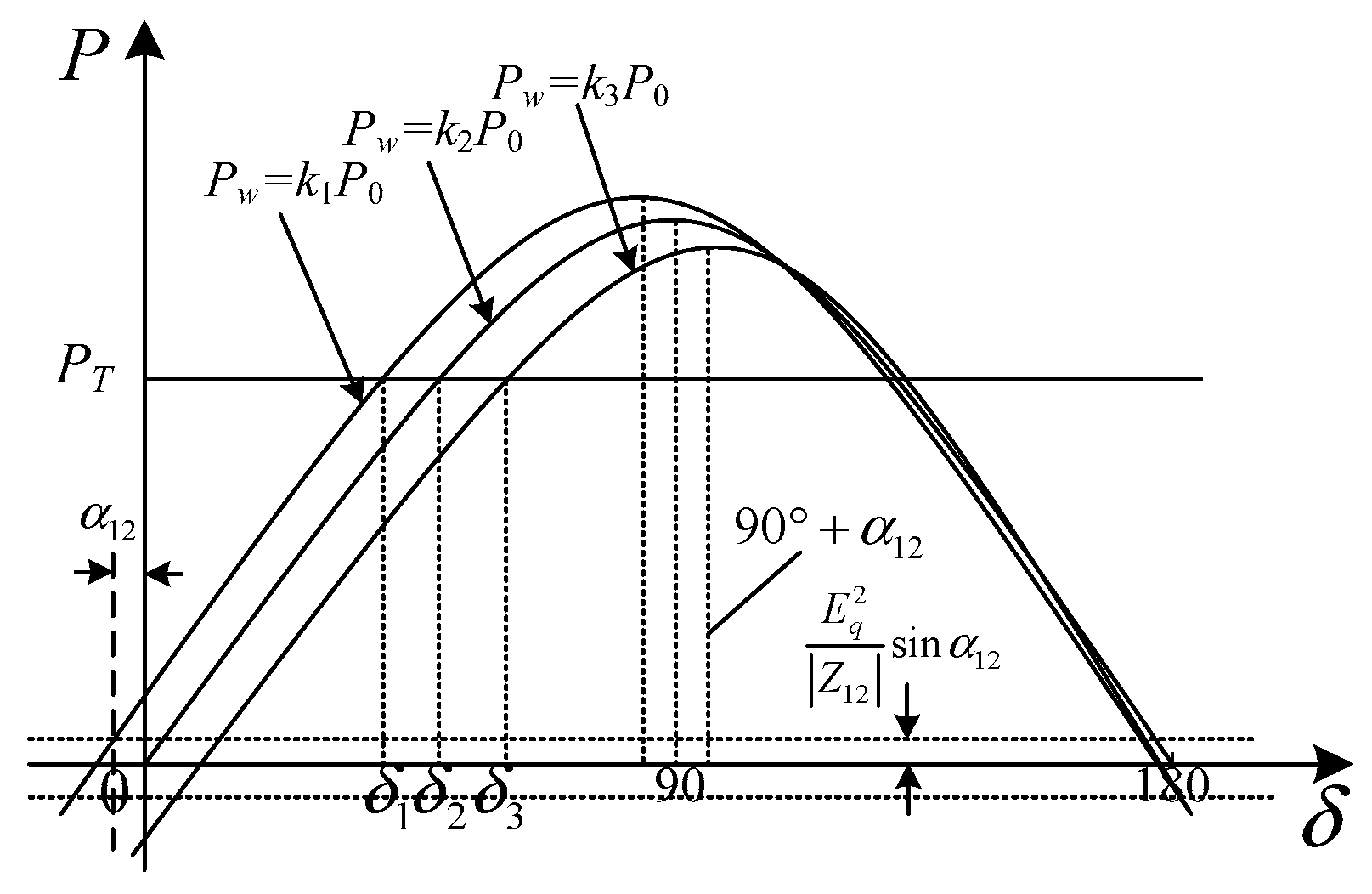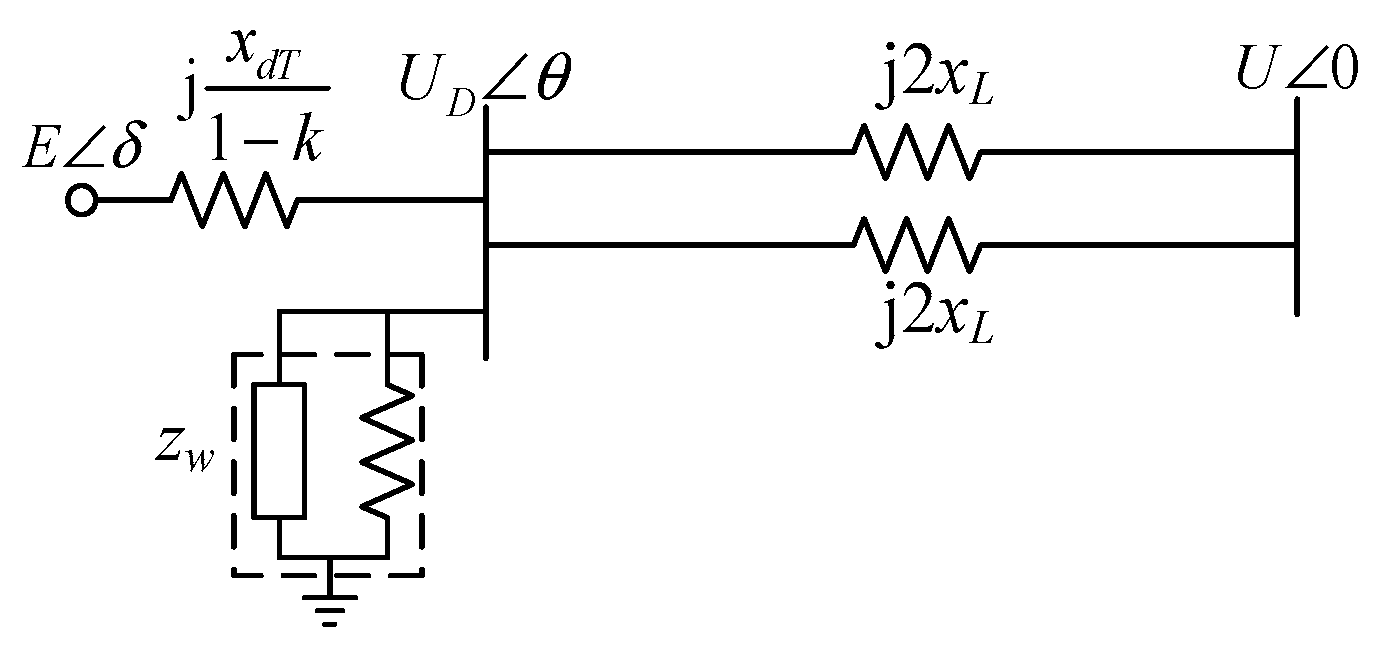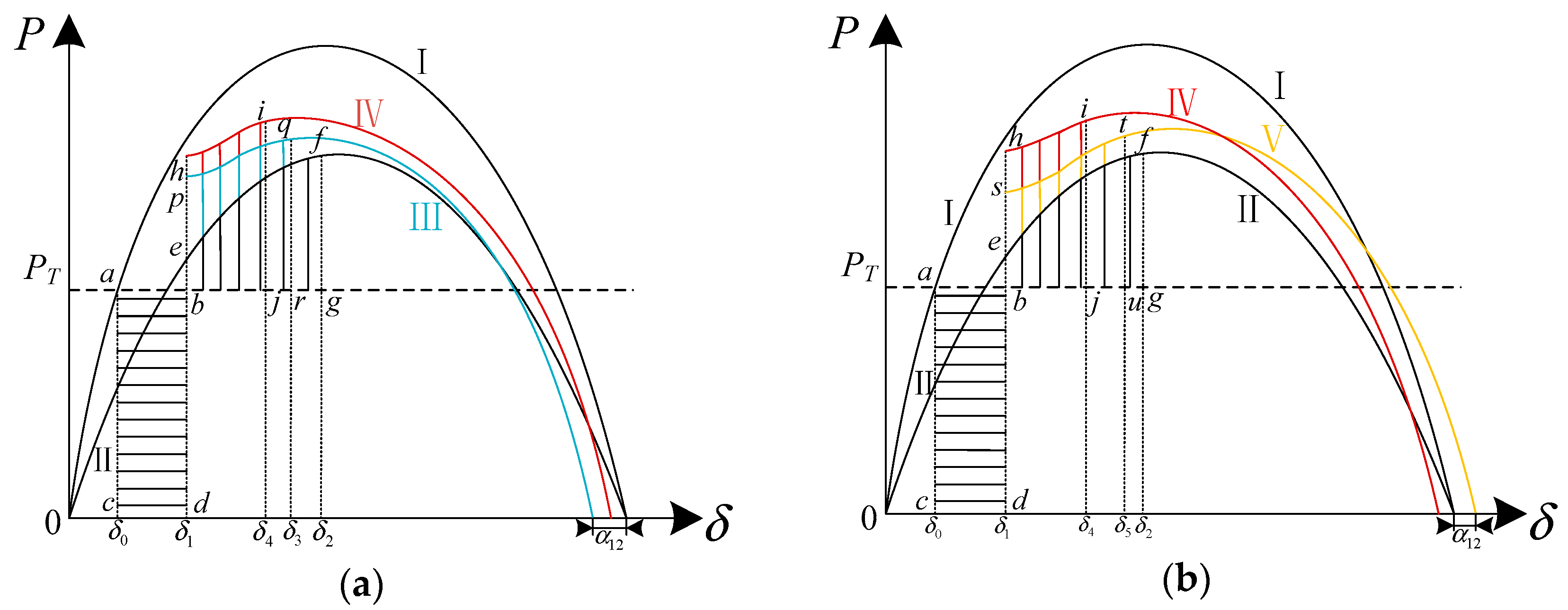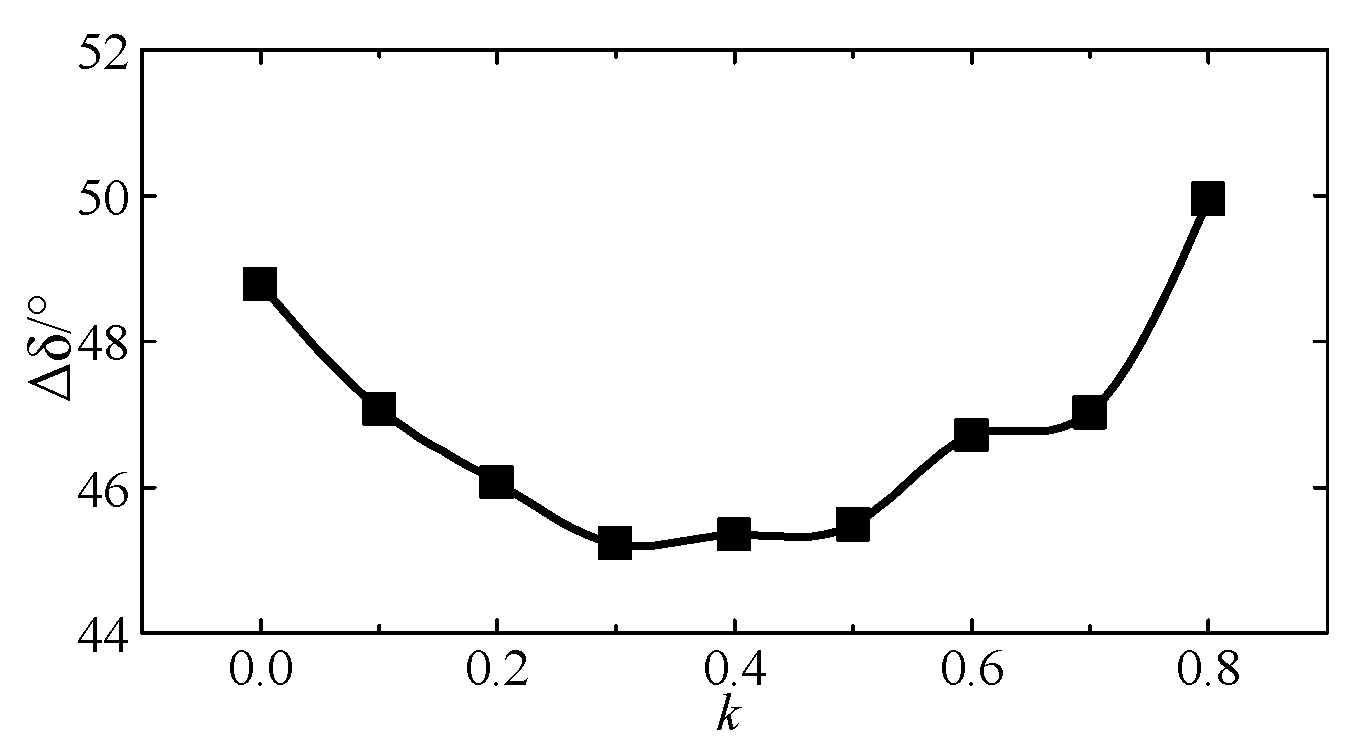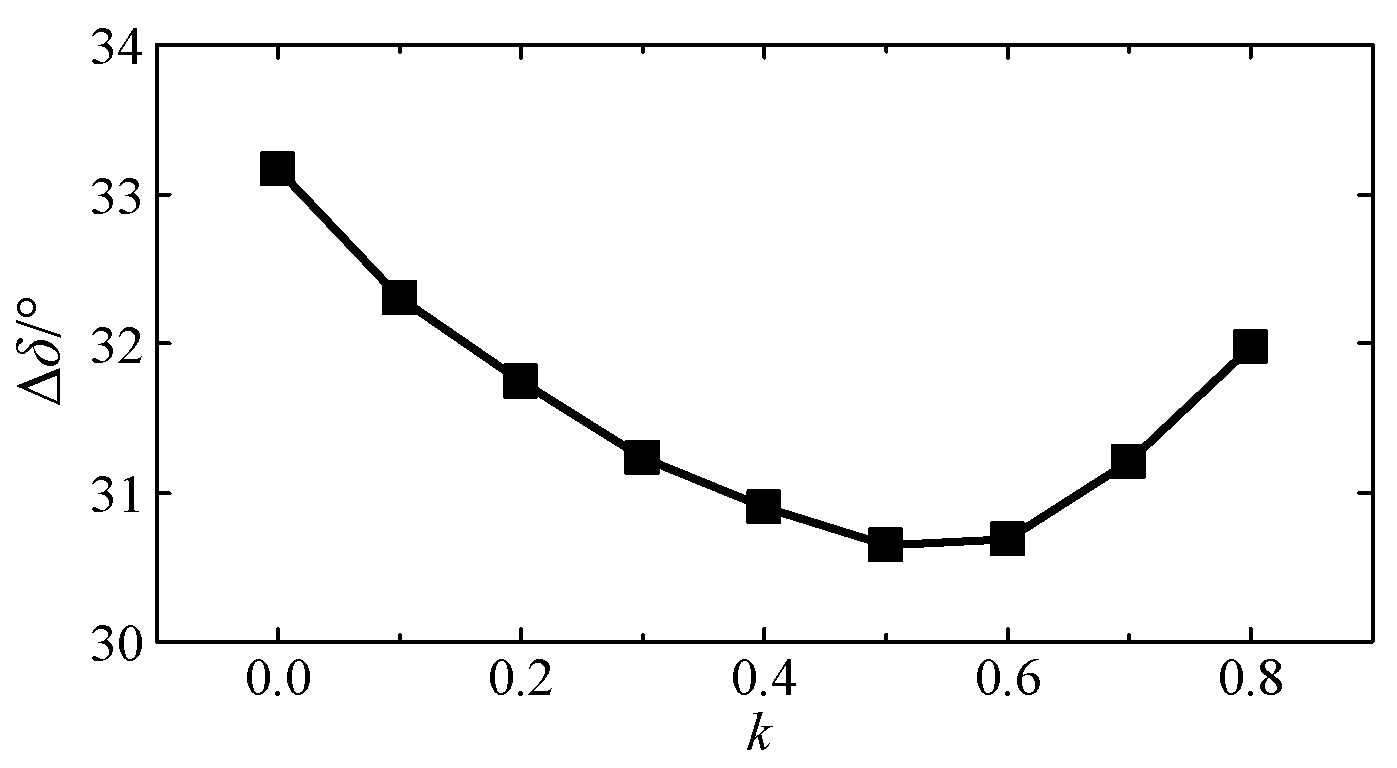1. Introduction
In recent years, wind power has developed rapidly in China. Several gigawatts of wind farms have been planned and constructed in North China, Northwest China and Northeast China (Three-North area) [
1]. The transmission distance to the eastern China load center is greater than 2000 km. To solve the problems that are associated with large-scale wind power consumption in China, it is necessary to transmit the wind power from northern areas to remote eastern areas [
2,
3].
Wind power that is harvested in the Three-North area is transmitted to local load centers by the existing ultra-high voltage alternating current (UHVAC) systems. However, long-distance transmission using an UHVAC system creates large amounts of power loss and reduces the economy of power delivery. An ultra-high voltage direct current (UHVDC) system offers the advantages of enormous transmission capacity, low transmission loss, and a narrow corridor; it is the clear choice for large-scale wind farms in northern China [
4]. However, large-scale wind power cannot be delivered remotely because of its fluctuation; it must be bundled with thermal power units to obtain steadier transmission power and thus meet the requirement of power control. Therefore, wind-thermal-bundled power transmitted by an UHVDC system mixed with existing UHVAC systems has become an effective scheme for large-scale wind farms in China. At present, the rated capacity of the ±800 kV UHVDC from Hami to Zhengzhou in the Hami wind-thermal-bundled system is 8000 MW, which can effectively relieve the power supply pressure of the Central China Power Grid and enhance the utilization of wind power [
5,
6].
In recent years, the doubly fed induction generator (DFIG) has achieved a significant position in wind turbine market because of its various advantages, including small converter capacities, flexible control, and reactive power compensation capability [
7,
8]. The transient characteristics of are different from those of traditional thermal power units and will affect the operation of system. In addition, the UHVDC system further affects power system stability. Therefore, in-depth research on the transient stability of wind-thermal-bundled systems is required.
At present, the influence of wind power integration on the stability of power grid has only been partially studied. The reactive power support of a DFIG during faults is considered critical for maintaining the rotor angle stability of thermal power units [
9,
10]. The conventional synchronous generator replaced with equivalent DFIG has negative impacts on rotor angle stability, but it can be mitigated by the proposed control strategies of the DFIG in [
11]. The damping characteristics and voltage control ability decreases appreciably with an increasing wind power penetration ratio, as indicated by simulations performed in [
12]. The inertia of a system is reduced with increasing wind power integration, and it worsens the rotor angle stability of system [
13]. Based on the extended equal-area criterion (EEAC), the rotor angle stability is considered to depend on the change in electromagnetic power and system inertia when the thermal power is replaced by equivalent capacity of DFIG or fixed speed induction generation (FSIG), as reported in [
14].
Wind power integration will affect the system voltage control ability and inertia, thereby affecting the rotor angle stability. Furthermore, the voltage control ability and inertia of system will vary with the integration capacity of wind power. Therefore, wind power penetration ratio will affect the rotor angle stability of the system. The mechanism by which DFIG penetration ratio affects rotor angle stability under a close-distance short-circuit fault and remote-distance short-circuit fault is analysed in [
15]. The variation in rotor angle stability with increasing wind power capacity after a three-phase short circuit fault is analysed based on the equal-area criterion (EAC) in [
16]. However, the UHVDC system is not considered in the above articles. The influence of wind power penetration ratio on rotor angle transient stability of a wind-thermal-bundled system after a short-circuit fault is analysed in [
17]. The function describing the variation of rotor angle acceleration with wind power penetration ratio after a short-circuit fault is deduced in [
18], and the conditions under which the function is concave are proposed.
The influence of UHVDC reactive power characteristics after a short-circuit fault on rotor angle stability is not considered in the above mentioned studies, and UHVDC faults are not analysed. The UHVDC block will break the power balance and thus affect the rotor angle stability of the system [
19,
20]. In addition, the reactive power recovery characteristics of UHVDC systems and wind power during a fault will also affect the rotor angle stability [
21]. Therefore, further mechanistic analyses of the influence of wind power penetration ratio on rotor angle transient stability and research on optimal wind power penetration ratio under the constraint of rotor angle transient stability are required; such studies can provide a reference for the planning and operation, and thus be used to improve the rotor angle stability of wind-thermal-bundled systems.
In this paper, the electromagnetic power equations of a typical wind-thermal-bundled system under a UHVDC block and short circuit of UHVAC lines are derived, respectively, based on an analysis of the transient external characteristics of a wind farm and UHVDC system. The influence of wind power penetration ratio on rotor angle stability is analysed, and the optimal wind power penetration ratio corresponding to the minimum value of the rotor angle difference is determined. Furthermore, the effect of system parameters, such as UHVDC transmission capacity and UHVAC line reactance, on the optimal wind power penetration ratio are discussed. The theoretical derivation is verified by a simulation of a typical wind-thermal-bundled system and an actual system in China’s Northwest Power Grid.
This paper is organized as follows: the electromagnetic power characteristics of a wind-thermal-bundled system during normal operation are analysed based on an analysis of the transient characteristics of a wind farm and UHVDC system in
Section 2. The effects of wind power penetration ratio on rotor angle stability and parameter variations on the optimal wind power penetration ratio under an UHVDC block are analysed in
Section 3, and the case of a short circuit of UHVAC lines is analysed in
Section 4. Simulation results are presented and discussed in
Section 5. Finally, the paper is concluded in
Section 6.
2. Methodology
The analytical method is introduced in this section. Firstly, the electromagnetic power of the thermal power units in a single-ended power transmission system is presented. Then, the power characteristics of a wind farm and UHVDC system are presented by introducing a hypothetical impedance in order to determine the impact on electromagnetic power. Finally, the electromagnetic power of thermal power units of a typical wind-thermal-bundled system during normal operation is analysed.
2.1. Electromagnetic Power Characteristics of a Single-Ended Power Transmission System
The structural schematic and equivalent circuit diagram of a single-ended power transmission system are shown in
Figure 1. The electromagnetic power of the thermal power units in a single-ended power transmission system is [
15]
where
Eq is the no-load electromotive force (EMF) of thermal power units;
U is the voltage of receiving end system;
is the angle difference between
Eq and
U;
Z11 is the self-impedance of thermal power units;
Z12 is the mutual impedance between thermal power units and receiving end system; and,
and
are complementary angles of the self-impedance angle and mutual impedance angle, respectively.
The thermal power units are simulated by the classical second-order model without the prime mover, governor or excitation system. When the system resistance is not considered, the electromagnetic power of single-ended power transmission system as shown in
Figure 1 can be calculated as follows:
where
xdT, which is called the equivalent internal resistance, is the sum of internal resistance of a thermal power unit
and the transformer impedance connected to thermal power unit
xT. The superscript I in the equations represents the relevant parameters of single-ended power transmission system shown in
Figure 1. Therefore, Equation (2) can be written as
2.2. Analysis of the Wind Farm Transient Characteristics
The structural schematic and equivalent circuit diagram of a typical wind-thermal-bundled system are shown in
Figure 2. Suppose that the total capacity of a wind-thermal-bundled system is
P0. When the wind power is not integrated, the number of thermal power units is
N, and
P0 =
N ×
PSG, where
PSG is the capacity of a single thermal power unit. When the wind power is integrated into the system, the number of thermal power units is
Nt, and the capacity is
PS =
Nt ×
PSG; thus, the wind power penetration ratio is
k = (
N −
Nt)/
N,
Nt = 0, 1, …,
N, and the equivalent internal resistance of thermal power is
xdT/(1 −
k).
The wind power is analysed based on a DFIG. The DFIG is simulated using the control model suggested in IEC 61400-27, which includes active power, reactive power, current and pitch angle control modules [
22,
23]. The wind farm is equipped with a static var compensator (SVC) according to the integration capacity of the DFIG. The parameters of the DFIG model that is used in this article are shown in
Appendix A. When the system is disturbed, the DFIG and SVC provide reactive power support to maintain the voltage constant [
24].
When a three-phase short circuit of an UHVAC line occurs in a wind-thermal-bundled system, the variations inthe bus voltage
UD of the rectifier station, active power
Pw, and reactive power
Qw injected into the system by the wind farm are shown in
Figure 3.
The wind power penetration ratio
k will affect the active and reactive power output of wind farm in a wind-thermal-bundled system. Suppose that the operation state of entire DFIG in a wind-thermal-bundled system is same, such that
Pw and
Qw vary with
k; that is,
Pw =
kPw0 and
Qw =
kQw0, where
Pw0 and
Qw0 are the instantaneous active and reactive power that are injected by the wind power when
k = 1. To facilitate the derivation of the influence of
Pw and
Qw on the electromagnetic power of thermal power unit, as shown in
Figure 2, the negative resistance
rw and negative reactance
xw are connected in parallel to the bus of the sending-end system. The impedance value of
zw is set as follows [
15]:
2.3. Analysis of UHVDC Transient Characteristics
UHVDC in a wind-thermal-bundled system is simulated using the CIGRE standard test model. The rectifier can be controlled as a constant current (CC) mode and constant α
min (CIA) mode. The inverter can be controlled as constant extinction angle (CEA) mode and CC mode, as well as with VDCOL control [
25,
26]. The structure diagram and parameters of the CIGRE HVDC control system are presented in
Appendix B. A large amount of reactive power is consumed while transmitting active power, and it is approximately 40% of the UHVDC transmission capacity [
27]. To ensure normal UHVDC operation, a large number of capacitors are installed on the AC side of the rectifier station in order to compensate for the reactive power of system. Suppose that the reactance value of the capacitors is
jxc; thus, the reactive power compensation
Qc of capacitors can be expressed as
During normal operation, the
QC is approximately equal to the reactive power
QD consumed by rectifier station; that is,
QC =
QD. When a three-phase short circuit of the UHVAC line occurs in the wind-thermal-bundled system,
UD,
PD and the reactive power exchange
QX between the rectifier station and sending-end system are shown in
Figure 4, where
QX =
QD −
Qc.
As shown in
Figure 4,
PD and
QD drops to zero during the fault. Then,
Qc is rapidly recovered as the voltage resumes, faster than the resume ratio of
QD; thus,
QX < 0. When
UD recovers at a higher level, the control mode of rectifier is switched from
αmin control to constant power control. Due to the time delay in the control system, the output current of rectifier is greater than the set value, which causes the rated value to be exceeded; thus,
QX > 0. After a time delay,
PD decreases to the rated value, and
QD equals
Qc; thus, the reactive power exchange between the rectifier and system is equal to zero [
28].
The
PD and
QD are variations after the fault, and they are affected by the system voltage and the control schemes of UHVDC after fault. To facilitate the derivation of the influence of
PD and
QD on electromagnetic power of thermal power units, a resistance
rD and reactance
xD are connected in parallel to the bus of the sending-end system. The impedance value of
zD is set as follows:
During normal operation,
QD is equal to
Qc, thus,
xD = 0, and
rD can be written as follows:
2.4. Electromagnetic Power Characteristics of the Thermal Power Units in a Wind-Thermal-Bundled System
During normal operation, the equivalent circuit diagram of a typical wind-thermal-bundled system is shown in
Figure 2. The electromagnetic power of the thermal power units in the wind-thermal-bundled system is
A comparison of Equations (11) and (4) shows that the self-impedance and mutual impedance are changed due to the DFIG, UHVDC, and rectifier station capacitors that are integrated into the system. The superscript II in the equations represents the relevant parameters of wind-thermal-bundled system shown in
Figure 2. The self-impedance
and mutual impedance
in Equation (9) are calculated as follows:
The value of and depend on the difference between PD and Pw; and are always positive. When PD > kP0, , , , and ; therefore, . Relative to , the curve of moves to the left. With increasing k, , , , and when PD < kP0; therefore, . Relative to , the curve of moves to the right.
The electromagnetic power characteristics of thermal power units with different wind power penetration ratios are shown in
Figure 5. For wind power penetration ratios
k1,
k2, and
k3,
k1 <
k2 <
k3.
Figure 5 shows that the electromagnetic power characteristics moves to the lower right with increasing
k. Specifically, the initial rotor angle increases continuously with increasing
k when the mechanical power and the operating conditions of thermal power units are unchanged.
3. Analysis of Wind Power Penetration Ratio in a Wind-Thermal-Bundled System Considering UHVDC Block
The UHVDC block that is caused by an internal fault, such as that in an UHVDC line circuit or converter valve, will break the balance of active power and reactive power in the sending-end system. The surplus active power will cause the rotor speed of the thermal power units to increase. To balance the surplus reactive power, all capacitors installed in the rectifier station are switched off after a delay time
after the UHVDC block [
27]. In this paper, it is assumed that the capacitors are switched off with no time delay to simplify the equation derivation, that is,
.
3.1. Analysis of Electromagnetic Power Characteristics after UHVDC Block
After the UHVDC block, PD is reduced to zero, and QD is also reduced to zero. Therefore, zD can be considered an open circuit.
The equivalent circuit diagram of the system after the UHVDC block is shown in
Figure 6, and the relevant parameters are represented by the superscript III. The electromagnetic power characteristics of the thermal power units are
:
where
The electromagnetic power of thermal power units is altered after the UHVDC block because the system structure and the parameters are changed. The parameters
xdT and
xL in Equations (13) and (14) are constant, and
Pw0 and
Qw0 are affected by the system parameters and control. The self-impedance angles
can be obtained by Equation (13):
where
The higher order term
in Equation (15) is approximately zero; thus,
is approximately equal to 90°, and
is approximately equal to zero [
15]. Therefore, the self-impedance in the power characteristics equations can be omitted, and Equation (12) can be written as follows:
3.2. Analysis of Wind Power Penetration Ratio on Rotor Angle Stability and the Determination of Optimal Wind Power Penetration Ratio
The variation of
UD, the active power
PL of the UHVAC lines,
Pw and
Qw after the UHVDC block and the capacitors switched off are shown in
Figure 7.
Large amounts of active power as surplus in the sending-end system are caused by the UHVDC block. The surplus active power is transmitted to the UHVAC lines and it substantially increases the power flow in the UHVAC lines. The reactive power loss of AC lines is approximately proportional to the square of the active power transmitted by UHVAC [
29]. Therefore, the power flow transferred from UHVDC will increase the reactive power loss of UHVAC lines and cause the voltage of sending-end system to drop. The electrical distance between wind farm and UHVDC system is small; therefore, the voltage of wind farm integration point will decrease after the UHVDC block. As shown in
Figure 8, the active power fluctuation of wind farm is small after an UHVDC block and can be considered constant; the reactive power
Qw is essentially positive before the rotor angle reaches the maximum.
The variation is analysed as follows. Equation (13) shows that increases monotonically with increasing k, and the increase or decrease in depends on the value of .
When , increases gradually with increasing k; thus, and the maximum rotor angle difference increases monotonically. Specifically, the rotor angle transient stability decreases gradually with an increasing k.
When
,
decreases gradually with increasing
k. Function
F1 is constructed as follows:
The derivative of
F1 with respect to
k is obtained, and the minimum point
km is calculated as follows:
Equation (20) shows that
F1 is a concave function whose minimum value occurs at
k =
km. The influence of the wind power penetration ratio on the acceleration area and deceleration area of the thermal power units is shown in
Figure 8.
For
k1,
k2 and
k3, 0 <
k1 <
k2 =
km <
k3 < 1. Curve I in
Figure 8 corresponds to the electromagnetic power of the thermal power units during normal operation without UHVDC or wind power. Curves II, III and IV correspond to the electromagnetic power when wind power penetration ratios are
k1,
k2 and
k3, respectively. As indicated by Equation (20),
decreases and
increases gradually with increasing
k when 0 <
k <
km; thus, curve III is to the upper right of curve II. When
k =
k1, the acceleration area is
Sabc, the deceleration area is
Scde, and the maximum rotor angle is
. When
k =
k2, the acceleration area is
Safg, the deceleration area is
Sghi, and the maximum rotor angle is
. As
Safg < Sabc,
can be obtained based on the EAC. When
km <
k < 1,
increases gradually with
k. The acceleration area and deceleration area when
k =
k3 are
Sajp and
Spqr, respectively. When compared with that at
k =
k2, curve IV is to the lower right of curve III and
Sajp >
Safg; thus, we have
. Specifically, the maximum rotor angle experiences an improvement first and then worsens with the increase in
k, and the rotor angle is minimized when
k = km. Thus,
km is described as the optimal wind power penetration ratio after the UHVDC block.
3.3. Analysis of Factors Affecting the Optimal Wind Power Penetration Ratio
The optimal wind power penetration ratio km is affected by PD and xL after the UHVDC block. When , the rotor angle transient stability of the system worsens monotonically with increasing k. When , the rotor angle transient stability first improves but then worsens with increasing k, and the optimal wind power penetration ratio is km after an UHVDC block.
The power flow transferred to the UHVAC lines increases gradually with PD, and it causes the reactive power loss of the UHVAC lines to increase and UD to decrease. Equations (14) and (20) indicate that the change ratio of and increases with decreasing UD and causes the optimal wind power penetration ratio km to decrease. Specifically, the optimal wind power penetration ratio km decreases with an increasing PD.
6. Conclusions
In this paper, equations describing electromagnetic power characteristics under a short circuit of UHVAC lines and an UHVDC block are derived based on an analysis of the external characteristics of a doubly fed wind farm. The effects of the wind power penetration ratio on the rotor angle transient stability are analysed and the optimal wind power penetration ratio corresponding to the minimum value of rotor angle difference is determined. The effects of system parameters, such as the UHVDC transmission capacity and the reactance of UHVAC lines on the optimal wind power penetration ratio, are discussed. The conclusions are as follows:
(1) During normal operation, an increase in wind power penetration ratio will cause the curve of electromagnetic power to shift to the lower right, that is, the initial rotor angle increases continuously with increasing k when the mechanical power and operating conditions of the thermal power units are unchanged.
(2) After the UHVDC block, the variation trend of the rotor angle stability under different wind power penetration ratios is affected by the reactance of the UHVAC lines. When the reactance value is small, the rotor angle stability worsens monotonically with an increasing wind power penetration ratio. When the reactance value is greater, the rotor angle stability first improves and then worsens. The rotor angle stability worsens monotonically and the optimal wind power penetration ratio in typical wind-thermal-bundled system is 0 at xL is 0.005, and the variation trend of rotor angle stability is concave and the optimal wind power penetration ratio is 30% when xL is 0.02.
(3) The increase in the UHVDC transmission capacity causes the optimal wind power penetration ratio to decrease. The typical system results indicate that the optimal wind power penetration ratio increases from 30% to 50% when PD decreases from 3200 MW to 2400 MW.
(4) After the three-phase short circuit of the UHVAC lines, the rotor angle stability first improves and then worsens with an increasing wind power penetration ratio. An increase in the UHVDC transmission capacity or a decrease in the reactance of the UHVAC lines will cause the optimal wind power penetration ratio to increase. The optimal wind power penetration ratio increase from 40% to 60% when xL decreases from 0.02 to 0.006 and decreases from 40% to 30% when PD decreases from 3200 MW to 1600 MW.
The results are significant for the planning and operation of wind-thermal-bundled systems. The rotor angle transient stability can be improved by optimizing the structure of the system during the planning, or by adjusting the reactance of the UHVAC lines by TCSC during the operation. In addition, it should be noted that this paper is a qualitative analysis of the variation trend of rotor angle stability and is not a precise quantitative calculation.
The impact of the control schemes of DFIG and UHVDC on rotor angle transient stability is the follow-up task. Optimal control schemes of DFIG and UHVDC for improving rotor angle stability in a wind-thermal-bundled system will be developed in the future. Research results will be reported in later articles.
